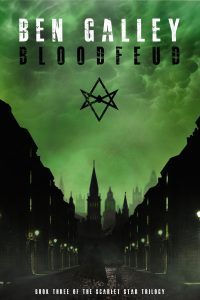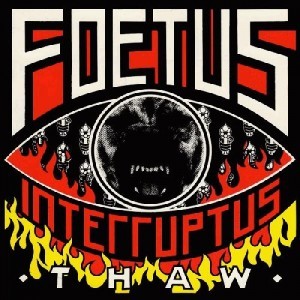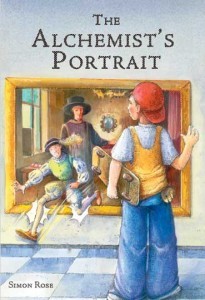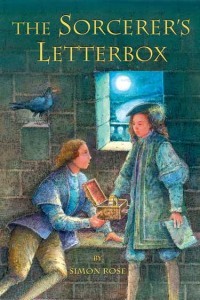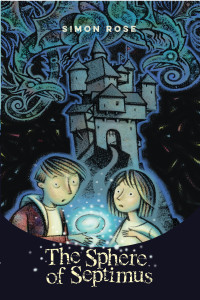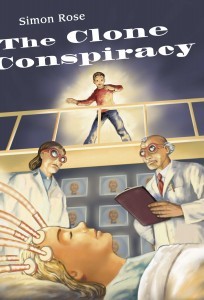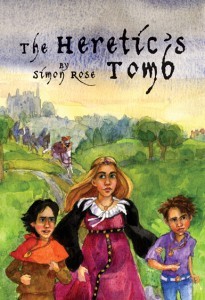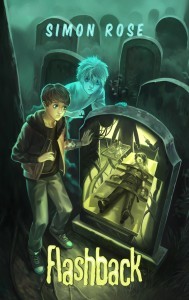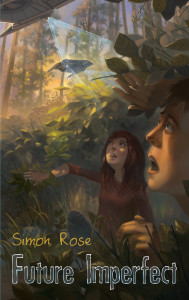Konn Lavery's Blog: Posts from konnlavery.com, page 56
April 27, 2016
Joining SANE Clothing at Shredmonton
From May 6th to May 8th I will be joining SANE Clothing at the first Shredmonton Metal Festival and Conference here in Edmonton. It will be an exciting weekend of everything metal with over 30 bands playing throughout the weekend and other exciting merchants who will be joining the weekend.
The event will take place in Edmonton. The conference will be taking place at the Shaw Conference Centre and the shows at the Starlite Room & Brixx.
This event I will be bringing the Mental Damnation series and showcasing the artwork which can be found on SANE Clothing’s high quality branded T-Shirts.
Grab tickets at Shredmonton’s
Website to enjoy a weekend of METAL!
When?
May 6: Starting at 8:00 PM
May 7: Starting at 5:00 PM
May 8: Starting at 6:00 PM
Where?
The Starlite Room
10030 102 St NW, Edmonton, AB T5J 0V6
Looking forward to rocking out all weekend. Join us for an exciting time. Here’s the full list of bands:
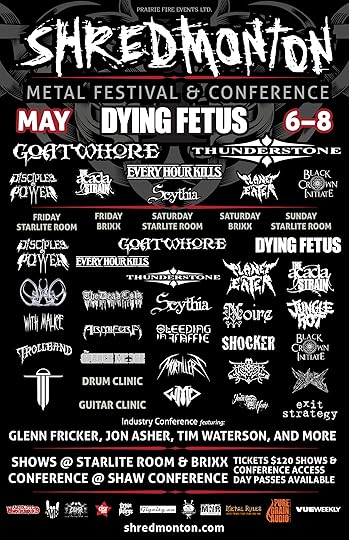
The post Joining SANE Clothing at Shredmonton appeared first on Konn Lavery.
April 18, 2016
Ben Galley – A Self-Publishing Wizard
This blog post covers a unique opportunity I had to speak with fellow fantasy and indie author Ben Galley. I met Ben Galley through a random stumble on the web, finding his online self-publishing consulting services, Shelf Help. Ben provided one on one discussion about what my goals as a writer were and offered valid solutions to my current situation. After our session I took his advice into full swing and began building my author platform. Ben was also willing to spend some time in this article to discuss his self-publishing journey and how he got into the writing business. Let’s chat with Ben and gain some insight!
Ben, give us a brief introduction to yourself. Why did you get into writing?
The reason I got into writing is, very simply, that I am addicted to it, and I have been since a kid. My parent raised me on some of the best fantasy and sci-fi books around – epics like LotR and Dune, to classics like CS Lewis and Greek mythology. Those books and stories bewitched me, and when I started getting my own ideas, I threw myself into writing. I would spend all my spare time doing it. I wrote my first full-length novel at 11 and have been at it ever since.
Professionally speaking, I didn’t begin to publish my books until 2008. I’d just come out of music university (another passion of mine), and was working in bars and clubs while trying to make my way with bands and solo projects. Unfortunately, they simply weren’t going anywhere, and I decided that it was time for a change – that I was going to write for a living. That one decision has led me to where I am today.
How come you chose to self-publish vs traditional publishing? Pros vs. cons?
When I fist started researching how to publish, I realised that I could take the skills I’d learnt as an independent musician and use them as an independent author. DIY self-publishing mirrored a lot of the steps to producing music and building a fanbase. I round out that by taking the reins myself, and going DIY, I could keep more of my royalties, keep creative control, retain my rights, get monthly royalty payments and real-time reporting, and work directly with the stores, all things I couldn’t necessarily do traditionally. Also, I wanted to publish then and there, not wait months to be taken on by an agent. Or, if I were to be successfully taken on by a publisher, the lengthy publishing schedule. Overall, the opportunities of DIY suited my entrepreneurial mindset, and that’s why threw myself into it. I may have been missing out on the advance and punchier marketing power of a traditional publisher, but DIY was what I wanted to do – to carve out a business with myself at the helm, and all the while get to do what I enjoy.
What was your most challenging obstacle you faced when choosing self-publishing?
That’s a tough question, as each stage of self-publishing has its tricks and traps. I think the most challenging aspect is professionalism. Maintaining it is a constant effort. Your standards are ever-changing, as is the market and the level of expectation. Being a professional means that you do everything to the very best of your ability, from your cover to your editing, and from your website to how you word an email. It’s tough, trying to be indistinguishable from a traditional publishing house, and running a business, but they are possible with a bit of hard work.
Did you have any guidance or mentors when taking this path, or was it more self-exploration?
It was complete exploration. Wandering in unknown territory. I’ll be the first to admit I made plenty of mistakes, and came narrowly close to some pitfalls, but each of them taught me an important lesson, and that’s how I managed to forge my own method of DIY self-publishing, the method I teach now as a self-publishing consultant. I call it the Shelf Help method, and I believe it’s the best way to self-publish.
If you could go back to where you started, what would you do differently?
You know what? Absolutely nothing. I have a code of no regrets, and as I’m currently very happy with where my career as an author is going, then I shouldn’t need to regret anything. Any mistakes I made were useful lessons, and so I’m glad to have made them.
You do more than just self-publish your own books, what else do you do in the writing industry?
As well as being an author, I teach other authors from all over the world my self-publishing method through consultations, video chats, online course and events. I do this through my site www.shelfhelp.info and it’s a role I’m very passionate about. It’s a pleasure to help other authors achieve their writing goals.
Aside from consulting, I also run a company called Truth and Tails with writer Alice Reeves and illustrator Phoebe Kirk. We write children’s books that are designed to eradicate prejudice and promote understanding in kids aged 3-8 through really simple messages and beautiful pictures. You can find us at www.truthandtails.com.
Any future plans to broaden your career in writing?
Next on my list is book number 11, while at the same time looking to exploit some more of my rights, such as hunting out translation and audiobook opportunities. That’s the good thing about retaining all your rights – they’re a form of currency that can help you move forward and achieve your big goals.
What can you share with us about your latest and upcoming novels?
I’m thrilled to say I’ve just published my tenth book – Bloodfeud – which is also the last novel in the Scarlet Star Trilogy. It’s a mash-up of weird west fantasy and alternate history, set in a strange version of 1867, and a coming-of-age tale of a young boy called Tonmerion Hark, who is sent to live on the very edge of civilization – Wyoming.
My next novel will actually be my first standalone novel, which I’m very excited about. I’m just about to start writing it.
Any advice you’d like to offer aspiring writers?
Lots! However that would result in a very large blog indeed. The best thing I can share is a recent post of mine in which I go through my top 5 tips for authors. You can find that here.
Overall, I’d say that you no longer have to worry about anything in your way. Self-publishing has now been established as a viable publishing option, so in short, there’s never been a better time to be an author. Gone are the days of vanity publishing. Now we have a straight-forward, agile, and affordable way of getting our books into the hands of readers, and a chance to make a living out of it, possibly a fantastic one at that. What this means is that if you’re thinking of self-publishing, just rest easy in the knowledge that you’re choosing to publish at a great time, and whenever you’re confused, know that advice is readily available. You aren’t alone!
Thanks again Ben for taking the time to answer the questions and share your thoughts on your journey as an author and advice on self-publishing. Looking forward to your future work!
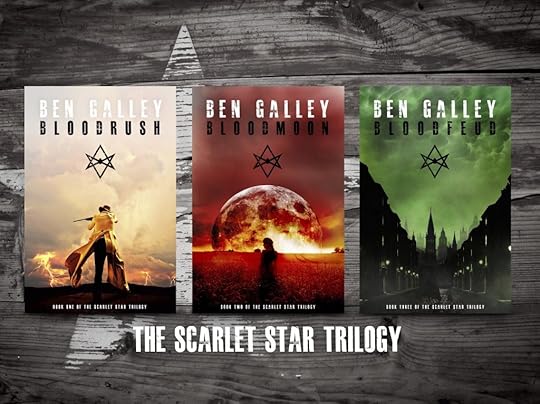
You can check out Ben’s novels at www.bengalley.com where you can also find his books, blog and Shelf Help consulting.
The post Ben Galley – A Self-Publishing Wizard appeared first on Konn Lavery.
April 11, 2016
Unprocessed Thoughts – April
Here’s the news, this blog post is a special one. It marks the first of a series of inspiration and creative explorations. The whole blog was supposed to be oriented around what sparks me. It took a turn into being about writing tips and guest bloggers. That direction just came more naturally. Probably from the history of writing course curriculum. For a change of the regular program welcome to – Unprocessed Thoughts April Edition.
With an intro paragraph like that it isn’t easy to follow up on. What I’d like to share is some of the new music I found in the month of March. I’ve been swamped with a lot of projects which has given me time to explore discographies.
I have a good friend of mine introduced me to Flux Information Sciences and instantly I was drawn into their use of synths and samples in a minimal noise form. The album Private/Public particularly caught my attention. Normally I can only handle noise projects in small doses but with this project the sounds and albums were diverse enough to keep me intuited. I worked backwards through their discography as far as I could go back. A Dedication to Volt was the one I couldn’t locate online.
Listening to Flux Information Sciences took me down a YouTube adventure where I discovered Cop Shoot Cop and Foetus. I had previously never heard of either bands or of musician J. G. Thirwell. After hearing the album Nail by Foetus I recognized the familiar sound of another musical project. Almost a deja vu moment, until track 4, Pigswill came on and I realized the similarities to Raymond Watt’s project . Listening to Foetus you can hear where Raymond Watt’s earlier inspiration came from. Both musicians have a heavy swing-style approach while utilizing early noise elements and punchy lyrics.
Needless to say I took a break from working to read up on these bands on Wikipedia and learn what other albums they had and other acts there are associated with. Foetus was a project I should have known of way earlier on. Being a heavy KMFDM fan and knowing of their members’ side projects like Excessive Force, MDFMK, , Slick Idiot and Skold how did I miss Raymond Watt’s prime source of inspiration?
The discovery was insightful in mentally mapping the history of music and how they evolve over time. Musicians and all forms of artists pull their inspirations from others, goes to support that each piece is a progression of art as a whole. Sometimes you just got to dig a little further to find the deeper roots.
The post Unprocessed Thoughts – April appeared first on Konn Lavery.
March 29, 2016
Heading to the Calgary Comic Expo!
 Next month is the Calgary Comic Expo which is an impressive sized con with four days of pop culture, cosplay and more. This year I am pleased to say I will be sharing a booth with Matthew Gillies of Flinch Publications. We will both be speaking at a panel about writing (time/date TBA) during the con as well.
Next month is the Calgary Comic Expo which is an impressive sized con with four days of pop culture, cosplay and more. This year I am pleased to say I will be sharing a booth with Matthew Gillies of Flinch Publications. We will both be speaking at a panel about writing (time/date TBA) during the con as well.
Last year Matthew and I met at the Edmonton Comic expo and realized we share a lot of similarities (writing horror and graphic design). Matthew was also willing to spend some time to chat about his work which can be read in the interview blog post from November.
Where Are We?
Matthew and I will be at the Flinch Publication booth in the BMO Centre.
Booth Number: D03
The expo runs from April 28th to May 1st.
2016 Show Hours
April 28 – 4pm to 9pm
April 29 – 1pm to 9pm
April 30 – 10am to 7pm
May 1 – 10am to 5pm
Looking forward to seeing you all there!
The post Heading to the Calgary Comic Expo! appeared first on Konn Lavery.
March 23, 2016
Seed Me Horror Novel Plot and Cover Reveal
For the past couple of years, I have been hinting about a new book separate from Mental Damnation. This one has been in the works since 2014 NaNoWriMo (National November Writing Month) where the first draft of the story was written. I will admit… it was terrible. Possibly the worst piece of fiction I had written. In early 2015, I returned to the story and scrapped over half of the plot, re-writing it into a completely new direction. Through title changes, plot adjustments and character/visual overhauls, the Seed Me novel is finally at a place where it can be shared.
The book will be ready for the fall of 2016. I am beyond excited to get this novel out to all you horror fans. In the meantime, here’s the cover and synopsis for the new Edmonton-based horror story:
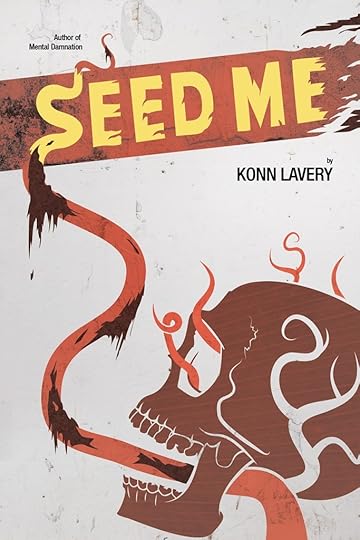
WARNING: DO NOT CONSUME
If you’re reading this, then you did not take the above warning seriously. In that case, you’re probably as stupid as me. I’m Logan, by the way. I didn’t pay attention to any warning signs either. Being an unemployed deadbeat in Edmonton with no family and getting dumped by your girlfriend for her best friend can wear a guy down. All I had was my cokehead buddy, Skip, to cheer me up.
Surprisingly, my precautionary tale was not caused by either Skip or the drugs. Let’s just say a drunken make-out session with a pale girl by a dumpster, who was supposedly pronounced dead earlier in the evening, can leave you mentally jumbled up. A good motivator to figure this scenario out is having robed cultists stalk you, asking where the girl is.
Is this an ill twist of fate? Did I bring this on myself? Is there a reason behind my misfortune? Is the moral to not make out with spooky girls behind dumpsters? Hell if I know…
More behind the scenes and sneak peeks to come in the near future. The book will have some additional media to go along with it as well (hint: musical). Keep watch for more updates!
The post Seed Me Horror Novel Plot and Cover Reveal appeared first on Konn Lavery.
March 14, 2016
Defining a Memorable Character Part 3 – The Name
A name in a story is exceptionally important considering when writing, we are only working with words. Defining a name for you character is a critical step to making them memorable and should be distinctive to them.
In the previous post we discussed coming up with personality and physical traits for your character. The character’s personality properties should reflect their physical ones. If the character has conflicting traits, your reader will have a difficult time buying into them.
Complimenting a Character’s Traits.
When picking a name, it should reflect the character’s personality. If a character is a rough-around-the-edges type and takes no prisoners naming him something soft (don’t take offense to this if it’s your name!) like Greggory or Kalan probably isn’t going to fit as well as something like Ace or Maddox.
Original Name or Existing Name?
That is up to you. It can be fun to come up with a completely new word for your character’s name but think about the setting of your book. Is it a drama based in modern times New York? Making a new name probably doesn’t make sense and you’re better off sticking with something like Janet or Rick. If you are writing a fantasy or a science fiction piece, coming up with an original name would fit much better, especially if it is another race.
Pronunciation
It is one thing to come up with a really cool name for a character (especially in fantasy stories) but if no one can pronounce your character’s name then they are going to have a hard time memorizing it the story or telling a friend about the book. A couple of options for tackling this is to include a dictionary on how to pronounce the names in your story. Another option is to change the name to something more simplistic. The name should naturally flow off the tongue when speaking it out loud.
Name Generators
Stuck for a suitable name? Name generators () are all over the web for every time of theme (, , demonic, angelic, military, punk, gangster, etc.). Do a search online and you will be amazed at what you can find for name generators. Another idea is to use a baby naming book, often they include a definition for the name and pronunciation for it. You’ll have a vast pool of names to use for future stories to come.
Once again… Character sheets!
As mentioned in the first blog post and the second, a character sheet is incredibly important to keep track of your character. Now that you have clearly identified their motive and traits, you can add their name to their character sheet. Voila! Your character has been molded and ready to be brought into your story.
There are many additional topics to cover with character creation and this does go beyond just writing novels. Character creation is seen in movies, video games, comics and more. Start paying attention and make note of characters when reading or watching a movie. The more you analyze how other writers implement their characters into stories will help you do the same for yours by identifying what works and what doesn’t work in other people’s work.
The post appeared first on Konn Lavery.
March 7, 2016
Author Simon Rose Discusses his Fantasy novel – Flashback
This week we have guest author Simon Rose from Calgary who is going to give some insight into his latest novel, Flashback – a fantasy adventure of time travel for teens.
First off, thank you Simon thank you for taking the time to chat with us about your novel.
Give us a brief introduction to you and why you got into writing.
I’m based in Calgary and am the author of ten novels for middle grade and young adult readers, including The Alchemist’s Portrait, The Sorcerer’s Letterbox, The Clone Conspiracy, The Emerald Curse, The Heretic’s Tomb, The Doomsday Mask, The Time Camera, The Sphere of Septimus, Flashback, and Future Imperfect. Growing up I read a lot of science fiction, fantasy, ghost stories, short story collections, and a tremendous number of comic books. At high school, I studied a great deal of history and have retained my interest in the subject up to the present day. I also read voraciously on ancient civilizations, mysteries, the supernatural, and the unexplained. I always had lots of ideas for stories but never thought about creating stories until I became a parent. Around that time the Harry Potter books appeared, as well as The Golden Compass and its sequels, and these books inspired me to create stories about the topics that interested me.
Tell us about your novel Flashback.
Flashback is a paranormal adventure involving psychic phenomena, ghosts, imaginary friends, mind control experiments, secrets, conspiracies, and time travel with a difference. Fourteen-year-old Max is the main character but David also plays a large role in the story, even though he died twenty years earlier. After a terrifying experience in a local cemetery, Max embarks on a mission to right a terrible wrong, putting his own life in danger in the process. Flashback is available as an ebook, in paperback, and as an audiobook and can be purchased online at places like Amazon, as well as from the publisher, Tyche Books, and directly from me.
Very cool, what were the inspirations for writing Flashback?
Flashback was one of the first ideas I had for a novel, one of those ideas that you don’t really know where it came from but it sticks with you and refuses to go away. You know that you have to develop the story and keep getting new pieces of the puzzle until it all comes together. It was inspired by numerous ghost stories, books, and movies about psychics and the paranormal, past lives and hypnosis, and the concept of going back into your own life armed with your current knowledge to somehow attempt to change the previous course of events, for better or worse.
Is all of your work for young adults?
In addition to the novels, I’ve written more than 80 nonfiction books books for children and young adults, but have also written books for adults. These include The Children’s Writer’s Guide, The Working Writer’s Guide, The Social Media Writer’s Guide, School and Library Visits for Authors and Illustrators, and Exploring the Fantasy Realm. These titles are all available as ebooks or as paperbacks. I’m also a contributing author to The Complete Guide to Writing Science Fiction and have written some picture books for younger readers.
Impressive! Do you have a preferred method to reach out to your fans?
I’m in all the usual places online, such as my website, Facebook, Twitter, YouTube, and so on, but also connect with readers in person at local bookstores when I conduct signings, during visits to schools, at children’s writing classes, and young writers conferences, and connect with adults during my classes at the universities. I’ll also be connecting with readers in May 2016 when I’m touring schools and libraries in Montreal and Quebec City during Children’s Book Week. People can subscribe to my newsletter, which goes out once a month and has details of my current projects, upcoming events, and so on.
Beyond the books, what else do you do as a writer?
In addition to the classes and workshops for children and adults, I offer coaching and editing services for writers in all genres and conduct online writing workshops and courses, such as Writing for Children and Young Adults and Writing Historical Fiction. I also write for magazines and offer copywriting services for websites, blogs, social media, and businesses.
Do you have any upcoming work?
My tenth novel, Future Imperfect, will be published this spring. It’s a technology-driven adventure featuring teenage geniuses, corporate espionage, and mysterious messages. I hope I’ll be able to tell you more about the novel in the near future, so stay tuned. Flashback also has two sequels coming out next year, one in the spring and the third installment in the summer.
Thank you again Simon for the chat! Always a pleasure to discuss work with another author, especially another one in Alberta. Looking forward to see what the Future Imperfect offers.
You can find Simon’s work on his website at www.simon-rose.com or online at the following social media sites:
YouTube
Google +
The post Author Simon Rose Discusses his Fantasy novel – Flashback appeared first on Konn Lavery.
February 29, 2016
Defining a Memorable Character Part 2 – Traits
A character’s personality and physical traits can say a lot about them, these statistics help make it easier for a reader to identify them. Their qualities is also what makes them memorable to the readers. Think about some of your favorite characters in a book or movie, was it their physical appearance or did they have a personality that you find appealing? What made these traits attractive to you? These are the questions you need to ask yourself so you can decide how you want readers to perceive your characters.
In the previous post we covered the motive of a character, what drives your characters to do the actions that they do. If they don’t have a reason then they do not serve much of a purpose in the plot. Now let’s get into a character’s traits to really give them defining roles.
Physical Traits That Fit the Role.
Your characters are going to have physical descriptions, it helps identify them and allows the readers to visualize them. A character’s physical persona should reflect their personality, much like how people are out on the street. Just go for a walk and examine how people act and how they are dressed. To simply put it, stereotypes come from somewhere. For example, if you have a character who has tattered hair, rugged clothes and has a naturally resting scowl is probably not going to be a cheerful character.
Create a Backstory to their Appearance.
Does your character have a scar? Do they always wear gloves? What about boots with a distinctive click in each step they take? These can be iconic appearances that your character has. Just because they are ‘cool’ traits doesn’t mean it fits with the character. If you mention distinctive physical traits like these your readers are going to begin to wonder “why does this character look that way?”
This is where your storytelling comes in, you’re a writer, give some backstory to their appearance!
Love the Personality
Common words you hear shared regarding dating, also applicable to writing memorable characters. Their personality are the traits that make them behave uniquely, the way they talk, are they optimistic, pessimistic or opportunists? Do they speak in riddles making them mysterious or do they not talk a lot at all? These are some of the questions you will have to ask yourself when creating their personality. Some of these will be easy to come up with once you have defined their motive in the story. A character who is seeking revenge for their family being murdered will be jaded, possibly short tempered and very goal oriented or irrational. A personality is what will really bring the character to life to you readers. Their actions and words will make the readers buy into them.
Finding inspiration: sketches, research, and reference.
Stuck coming up with ideas, or nothing coming to mind right away? Find some inspiration. I am a very visual person and often draw a quick sketch of my characters or creatures so I can have a better idea of how to describe them. Another effective method to generate ideas for character is researching the area or time period that you are writing about. What are the people like there? Any historical figures you can find in that area/time? You can also find characteristics in real people that you know or have heard of that might fit into your characters.
Character Sheets
We talked about these in the last blog post as well, all of your traits can go onto a character sheet. This will help you be consistent with their physical appearance along with keeping note on any unique personality traits that they might have. This will continue to help make your story straight.
Defining character traits is where you will most likely spend a lot of your time. It is highly important to polish these out before you get too deep into the story. Following these steps will help avoid any potential scene rewrites because a character is acting out of their normal. Some initial groundwork can save your hours down the road.
Next blog post we will take a look at coming up with character names. Much like the physical and personality traits of your character, you want them to have a name that is memorable to the reader.
The post Defining a Memorable Character Part 2 – Traits appeared first on Konn Lavery.
February 24, 2016
Defining a Memorable Character Part 1 – The Motive
When writing fiction, defining a character is exceptionally important. To define one, you first need to understand their motive. If they do not have any reason for their actions your character will seem misplaced or a ‘filler’ in the storyline. This can be avoidable as long as you do some preplanning to decide why the character is even in the story to begin with. Each of your characters should help in moving the story forward. So how do you stay organized with characters and their motives?
Create a character sheet.
A character sheet is used for organizing a character’s personality and physical traits along with their objectives in the story. If they have a supportive role to the protagonist, why are they helping them? Are they related to the protagonist or do they have their own personal agenda? What about a villain, what drives them to do the evil work that they do? A character sheet helps you keep track of who they are as you write the story, basically a reminder/list of rules that define them. A personal pet peeve of mine is when a character does something “out of their character”. There is a difference between a plot twist in their personality and something that doesn’t fit, a character sheet can help you define this.
Dive into a character’s past.
Trying to decide on a character’s motive in the story can be drawn back into the past, perhaps they have had a reason dating back to their childhood or a past event that takes place in the story’s lore. Another idea is they may have an intertwined history with another character (like the antagonist), giving them reason to come into the story.
Keep a character’s true motive hidden.
A character’s purpose in the story can be transparent to the reader which will help build a recognition with them, careful though this can also make them predictable and not engaging. Masking their true intention can create mystery and the reader will want to unlock their true intentions. This will help generate interest for the reader to continue on.
Protagonists and Antagonists – Heavy Weights in the plot.
The primary hero and villain in your story aren’t too different in terms of defining their motive (presuming you have a primary antagonist). They are the main focus, meaning the rest of the story will revolve around their intentions and actions. It shouldn’t be too difficult to find their motive for progressing in the story, if you can’t, you may need to rethink their involvement in the story.
Secondary Characters – Information Givers – Plot Changers – why are they there?
Your story may have some additional characters that show up throughout the story. Some of them may be used to provide clues, reveal knowledge or shift the plot. Be careful when introducing them into the story, they need to arrive naturally in the plot. For example, if the protagonist talks to an old man in the woods who sheds light on his journey, how did the hero meet the old man? What was the old man doing in the woods? Scenarios like this can make these secondary characters appear out of place and tossed in to move the story forward. Adding the old man earlier in the story by having him stalk the protagonist on occasion will also give motive for the protagonist to confront him opposed to a random encounter in the woods.
Giving your character a motive is going to add instant depth to the story. The character will gain credibility to the reader and they’ll be accepted as a part of the plot. Keep their motives believable and in synch with the storyline, otherwise they don’t serve a purpose in the story.
Next post will continue to review defining a character by getting into their personality and physical traits, key components to creating a unique and memorable character.
The post Defining a Memorable Character Part 1 – The Motive appeared first on Konn Lavery.
February 17, 2016
West Edmonton Mall Book Signing
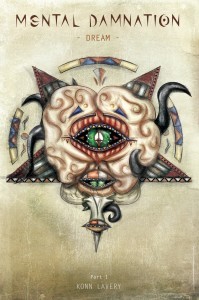
This book signing will be featured at West Edmonton Mall Chapters. Drop in for a meet & greet the author, artwork, tshirts, button pins and of course, the books themselves.
When and Where:
Saturday, February 20th from 11:00am – 5:00pm
Chapters – West Edmonton Mall
8882 170th, Edmonton, AB T5T 4M2
The post West Edmonton Mall Book Signing appeared first on Konn Lavery.
Posts from konnlavery.com
- Konn Lavery's profile
- 156 followers



